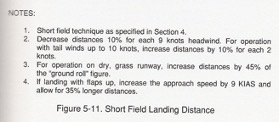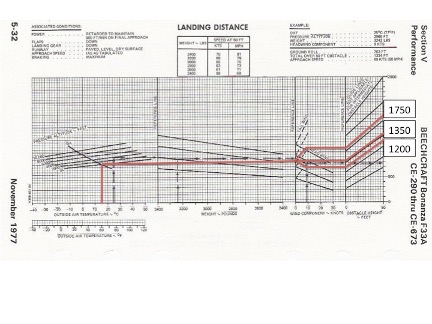Download this report as a pdf.
FLYING LESSONS uses recent mishap reports to consider what might have contributed to accidents, so you can make better decisions if you face similar circumstances. In most cases design characteristics of a specific airplane have little direct bearing on the possible causes of aircraft accidents—but knowing how your airplane’s systems respond can make the difference in your success as the scenario unfolds. So apply these FLYING LESSONS to the specific airplane you fly. Verify all technical information before applying it to your aircraft or operation, with manufacturers’ data and recommendations taking precedence. You are pilot in command and are ultimately responsible for the decisions you make.
FLYING LESSONS is an independent product of MASTERY FLIGHT TRAINING, INC.
Pursue Mastery of Flight™
This week’s LESSONS:
I was asked a question this week about landing on a one-way airstrip—one for which obstacles mean landing must happen one direction and takeoff the other—and the effect of tailwinds on takeoff and landing performance.
Convention has it that we take off and land into the wind. We learn from very early in our training that taking off into the wind helps get us aloft sooner, and that landing into the wind permits us to stop in a shorter distance.
But how much does it matter, really? Does it hurt to try to take off with the wind at your back, or land with a tailwind? Is there enough of a difference that, if the pattern is otherwise completely empty of traffic and collision avoidance and pattern predictability is not a consideration solely for purposes of this discussion, that you should still conform to the standard and take off or land into the wind, even if that doesn’t make sense for your direction of flight? Well, yes, it does.
Most Pilot’s Operating Handbooks (POHs) will carry at least some caution or warning about tailwind takeoffs and landings. Combine the recommendations of a few and you can derive some good rules of thumb about tailwind takeoffs and landings, to decide if it’s worth the risk.
For example, the Cessna 172S POH gives some fairly precise guidance on the relative effects of a tailwind versus the “conventional” headwind takeoff. Note 3 from the Takeoff Distance performance chart tells us that we should decrease the takeoff distance we derive from using the chart by 10% for every nine knots of headwind. But it also tells us to increase takeoff distance by 10% for every two knots of tailwind component.

Put another way, a tailwind component has almost five times the performance effect as a comparable headwind component. If we normally take off into the wind to improve takeoff performance, we really want to avoid taking off with a tailwind because the performance will be significantly impaired.
Cessna gives us similar guidance for landings with a tailwind. The Landing Distance chart contains the same nearly five-to-one difference between landing distance improvement with a headwind component and increased landing distance with a tailwind.

The folks at Beechcraft, to use another example, don’t give us any general rules for adjusting the takeoff distance for head- or tailwind components. They do, however, provide Takeoff and Landing Distance charts to let us determine the effect of head- or tailwinds on computed performance.

On the Takeoff Distance chart above I’ve plotted ground roll distance (zero obstacle height) for a roughly 10°C hotter than standard day at Colorado Springs, Colorado. The airplane is at maximum gross weight (3400 pounds). Note that this calculation assumes the pilot adheres to the Associated Conditions technique at the upper left of the chart, and uses the liftoff and 50-foot speeds tabulated for the airplane’s weight.
In this example a zero-wind takeoff would require approximately 1800 feet of ground roll before liftoff. Factor in a 10-knot headwind component and the computed takeoff roll distance is 1650 feet, a roughly 9% improvement.
Make that 10-knot breeze a tailwind, however, and the computed ground roll is 32% longer than the zero-wind takeoff—the tailwind’s detrimental impact is more than three times the amount per knot as the positive effect of a takeoff headwind.
From either of these airplane types we can confirm the wisdom of taking off into the wind in all but the most unusual cases.
Let’s look at the performance change on landing when comparing a headwind component to a tailwind. Cessna’s 172S POH has already told us a knot of tailwind is worth nearly five knots of headwind. The Beechcraft F33A POH gives us this sample calculation:

On a standard day at sea level and assuming a maximum gross weight F33A, the landing distance over a 50-foot obstacle (i.e., from about over the runway threshold to the point the airplane stops, assuming maximum braking is applied) is 1350 feet in zero wind. Add a 10-knot headwind component and the total landing distance is 1200 feet, a roughly 11% improvement.
Land under those conditions with a 10-knot tailwind, however, and the total landing distance is 1750 feet—a 31%increase in landing distance.
In summary, using these two POHs as examples we can begin to develop some rules of thumb:
- Each knot of headwind component on takeoff improves takeoff performance by roughly one percent, while each knot of tailwind component degrades performance by three to five percent. Tailwinds are three to five times as detrimental to takeoff as headwinds are an improvement.
- While each one knot of headwind component improves landing performance by about one percent, each knot of tailwind component degrades landing distance by about three to five percent. Tailwinds are also roughly three to five times as detrimental to landing performance compared to headwinds.
- In almost all cases, then, there is very good reason for avoiding tailwind takeoffs and landings, even if it makes more sense for the direction of flight on departure or arrival.
If the airstrip truly is one-way, and you must sometimes accept tailwinds for takeoff or landing, add the substantial distance margins necessitated by tailwind performance degradation. Taking winds into account you may have to delay, cancel or divert more frequently than when you are able to operate more conventionally into the wind.
Questions? Comments? Supportable opinions? Let us know at m[email protected].

Debrief
Readers write about recent FLYING LESSONS:
Reader and flight instructor Gary Palmer continues our discussion of off-airport landing zone selection and, when equipped, use of whole-aircraft parachutes:
Another comment on the September 25, 2023, about 1250 Pacific daylight time, crash of the Sling 4 TSI N135WT, I am a CFI and pilot flying out of Torrance Airport (KTOA) and very familiar with the area.
I want to offer a though about that final unfortunate turn. When we fly, we are used to aligning with the runway, it is a long rectangle and we land parallel to the longest side. That is natural but it also pre-disposes us to want to land parallel to the longest side of an intended off-field landing site. If you look at the Field of Dreams it is large and rectangular area. When I first heard of the accident and looked at the flight track, it appeared (this is my interpretation) that the final turn was trying to get more aligned with the length of the field. Consider that in order to complete that turn they had to fly past a point which would have positioned them to land on the diagonal.

A typical soccer field size is 75×120 yards. If you land on the diagonal you have 141 yards instead of 120 yards for the length. I think this is a common mindset to “line up with the straight edge” and not consider the longest run instead.
Excellent observation, Gary. Thanks for the mind expansion.
See https://thomaspturner.com/flying-lessons-weekly/flying-lessons-weekly-8/
South African reader Mike Blackburn adds:
Hello Thomas from sunny Johannesburg. Thank you for exploring the issues around the recent Sling crash. As an owner/operator of a very similar Sling4 aircraft, I have some thoughts on the use or not of the magnum BRS.
will say at the outset that due to difficulty in sourcing parts and parachute repacks in South Africa (apparently due to restrictions on import of the rockets?) I have had the parachute removed from my aircraft – so I may have a biased view here. Some things to consider regarding parachute recovery systems in LSA aircraft vs Cirrus:
1. The difficulty in establishing a parachute decision height. I used a thumbsuck figure of 1000 feet when briefing engine failures in my aircraft when the parachute was installed. The Cirrus safety height has been well established at 600 feet for the newer generation aircraft.
The seats in the aircraft. In the Cirrus, the seats are made of an impact absorbing honeycomb material which is supposed to be safe up to 20G. This is an important factor in the low injury rate in Cirri(?) which land under the canopy. The seat in my aircraft is an aluminum pan with a 3-inch thick cushion. I’d be surprised if someone landed under a chute and didn’t end up with a spinal injury.
Slow flight speed characteristics. The Cirrus approach speed (if I remember correctly) is around 72 KIAS and in the stall I don’t recall it being very stable (have around 90 hours in an SR20). The stall characteristics of my Sling are extremely benign and the aircraft will mush down in a full stall at around 38 knots. This will result in less energy to be dissipated in the event of a power off, off field landing.
So I have clearly rationalized not having the chute in the aircraft and it was with regret that I had to remove it. Where I would definitely use a chute if it was present would be in the scenario of an engine out at night or a midair collision / airframe failure. Of course these options are not available [to me] any more. However, I hope this may clarify the possible decision making around a pull/no pull decision in this case.
Thank you as always for thought provoking discussions.
You indeed do bring up some interesting points. The SR20 Airplane Flight Manual says, “Expected impact in a fully stabilized deployment is equivalent to a drop from approximately 10 feet.” Interestingly, it also states:
Several possible scenarios in which the activation of the CAPS would be appropriate are discussed in Section 10: Safety Information of this Handbook. These include:
• Mid-air collision
• Structural failure
• Loss of control
• Landing in inhospitable terrain
• Pilot incapacitation
Interesting, because “engine failure” is not on Cirrus’ list, except in the event of inhospitable terrain. The bigger issue, however, is the lack of data and in some cases reduced safety protection of Experimental aircraft when compared to similar-appearing systems in (relatively) recently type certificated aircraft. It’s unfortunate you had to remove the Magnum BRS from your Sling. As you note, however, the protection it provides—potentially valuable though it be under some circumstances—is not the same as the type certificated CAPS parachute and airframe crush protection in a Cirrus. Thank you, Mike.
Reader Sam Dawson writes about the recent Beech Debonair crash piloted by a popular YouTube personality, resulting in her death and the death of her father. Sam writes:
When you and I learned to fly there was little difference in GA panels. Almost all had the standard six pack (unless you flew an old one with an odd layout), avionics were pretty much the same except maybe the [intercom system], or if the airplane had the cat’s meow maybe a KNS-80 RNAV. Today’s airplanes are more complex. Different PFD’s, GPS, autopilots.
We as instructors need to adapt. Most type ratings I’ve gotten now use a 4-step process that I think should be emulated by CFIs:
- Systems. The student (and the CFI), must have a grasp of the airplane systems to include avionics and should pass a written and/or oral [exam]. This involves work on the part of the CFI as we need to actually delve into the manuals as well and perhaps get some training from an expert.
- Procedure validation. This should involve a computer simulator if available, or hooking up ground power. The student should now be trained on how the systems actually work. How you turn off/on the autopilot and use the various modes. How to program the GPS. The airplane with a running engine is a horrible classroom and should be avoided if possible at this point.
- Movement validation. This phase involves ACS/PTS [Airman Certification Standards/Practical Test Standards] maneuvers. Learning how the airplane handles, how to fly an approach using the autopilot, hand flying with processed data (FD), hand flying using raw data. Emergencies. etc.
- Line orientation flying. Put it all together. Do some cross country flying with scenarios such as a fuel issue, changing weather, etc.
Thoughts?
Absolutely, Sam. I’ve been involved the in the development of several pilot training systems, some using simulators and others focusing on training in the airplane. You’re exactly right: the first step is to learn the systems, procedures and techniques for the specific airplane. You have to get into the Pilot’s Operating Handbook/Airplane Flight Manual (POH/AFM) and develop Airline Transport Pilot (ATP)-level mastery of these essentials for each system—including avionics—all from a pilot’s standpoint:
- How it’s designed;
- How it works;
- What normal, abnormal and emergency operation looks like; and
- How you work it, in normal, abnormal and emergency situations.
That may sound simplified, but aim for proficiency and mastery. In some airplanes the systems and capability of the airplane make this a quick process; in others substantial effort is required.
This includes use of avionics simulators or practice in the aircraft on the ground (as Sam says), followed by systems practice and maneuvers in the air. The current scenario-based training philosophy is effective, but only after the pilot has basic aircraft handling and systems management mastered so he/she is not so focused on simply flying the airplane that LESSONS are lost in scenarios. A concert pianist spends an incredible amount of time playing scales and exercises before she/he can play a concerto. Similarly, pilots must practice angle of attack/airspeed control, flight path management, and normal, abnormal and emergency procedures before being ready to combine those skills in realistic scenarios.
So my thoughts? You’re exactly right. The type rating outline you relate is an effective way to learn about light airplanes, from Cubs to Vision Jets. Thank you, Sam.
More to say? Let us learn from you, at [email protected].

Share safer skies. Forward FLYING LESSONS to a friend
Please help cover the ongoing costs of providing FLYING LESSONS through this secure PayPal donations link. Or send a check made out to Mastery Flight Training, Inc. at 247 Tiffany Street, Rose Hill, Kansas USA 67133. Thank you, generous supporters.
Thank you to our regular monthly financial contributors:
Steven Bernstein, Montclair, NJ. Robert Carhart, Jr., Odentown, MD. Randy Carmichael, Kissimmee, FL. Greg Cohen, Gaithersburg, MD. John Collins, Martinsburg, WV. Paul Damiano, Port Orange, FL. Dan Drew. Rob Finfrock, Rio Rancho, NM. Norman Gallagher. Bill Griffith, Indianapolis, IN. Steven Hefner, Corinth, MS; Ellen Herr, Ft Myers, FL. Erik Hoel, Redlands, CA. Ron Horton. Robert Hoffman, Sanders, KY. David Karalunas, Anchorage, AK. Steve Kelly, Appleton, WI. Karl Kleiderer. Greg Long, Johnston, IA. Rick Lugash, Los Angeles, CA. Richard McCraw, Hinesburg, VT. David Ovad, Resiertown, MD. Steven Oxholm, Portsmouth, NH. Brian Schiff, Keller, TX. Paul Sergeant, Allen, TX. Ed Stack, Prospect Heights, IL; Paul Uhlig, Wichita, KS. Richard Whitney, Warrenton, VA. James Preston, Alexandria, VA. Johannes Ascherl, Munich, Germany. Bruce Dickerson, Asheville, NC. Edmund Braly, Norman, OK. Steven Hefner
And thanks to these donors in 2024:
Jim Lara, Joseph Stadelmann, Dixon Smith, Barry Warner, Wayne Mudge, Joseph Vandenbosch, Ian Campbell, Jay Apt, John Kimmons, Derek Rowan, Michael Maya Charles, Ron Horton, Lauren McGavran, Gerald Magnoni, Amy Haig, Rod Partlo, Brent Chidsey, Mard Sasaki-Scanlon, SABRIS Aviation (Dave Dewhirst), Edmund Braly, Joseph Orlando, Charles Lloyd, Michael Morrow, Abigail Dang
Pursue Mastery of Flight
Thomas P. Turner, M.S. Aviation Safety
Flight Instructor Hall of Fame Inductee
2021 Jack Eggspuehler Service Award winner
2010 National FAA Safety Team Representative of the Year
2008 FAA Central Region CFI of the Year
FLYING LESSONS is ©2024 Mastery Flight Training, Inc. For more information see www.thomaspturner.com. For reprint permission or other questions contact [email protected].

